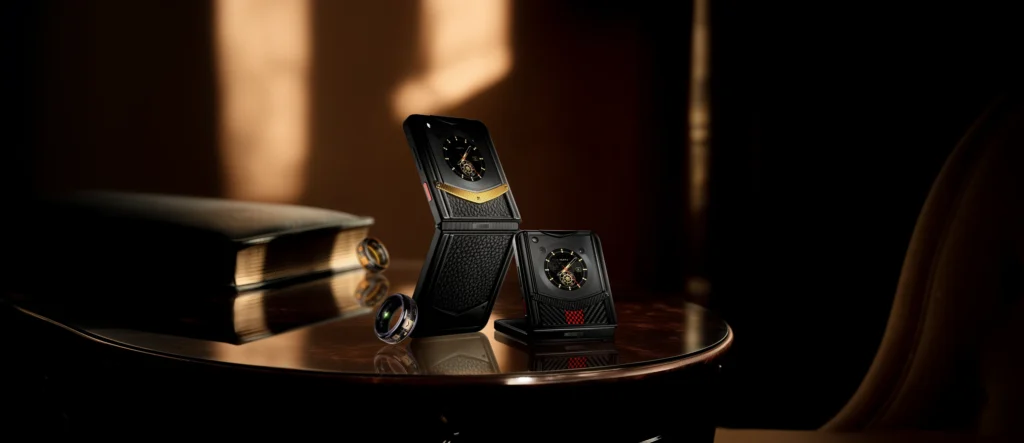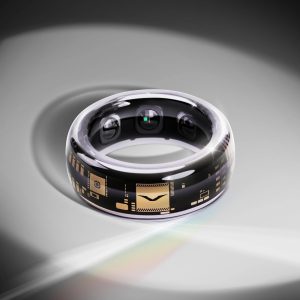
In an age of premium, thousand-dollar-plus smartphones, few things are more frustrating than seeing your signal bars drop to zero at a critical moment. As we embrace the innovation of foldable phones in 2025, the demand for a Folding Phone With Strong Signal has never been more critical. These devices are productivity powerhouses, but without a stable, reliable connection, they're just expensive pocket mirrors.
This guide will break down the science behind signal strength in these complex devices and compare the two titans of the foldable market: Google's upcoming Pixel Fold series and Samsung's dominant Galaxy Z Fold line, to help you decide which one will keep you connected, no matter where you are.
Understanding Signal Strength in Folding Phones
What actually determines a phone's signal strength?
A phone's ability to hold a strong connection is a complex interplay of three key factors:
-
The Modem: This is the engine of your phone's connectivity. It's a chip that processes radio signals, translating them into the data you use. Companies like Qualcomm are famous for their high-performance Snapdragon modems, which are often considered the industry benchmark. Samsung develops its own Exynos modems, and Google has historically used Samsung's modems in its Tensor-powered Pixel phones.
-
Antenna Design: The physical antennas are crucial. In a foldable phone, this is a massive engineering challenge. Antennas must be strategically placed to avoid being blocked by your hands or the phone's own metal frame and complex hinge, and they need to work flawlessly whether the device is open or closed.
-
Software Optimization: The phone's software plays a vital role in managing the modem, efficiently switching between cell towers, and processing the signal for the best performance and battery life.
Why is getting a strong signal in a foldable phone a unique challenge?
The very nature of a foldable phone creates obstacles for radio waves. The extensive metal in the hinge mechanism can interfere with signals, and the need for antennas to serve both a smaller cover screen and a large internal display complicates their design. Engineers must find clever ways to ensure consistent performance, which is why a Folding Phone With Strong Signal is a true feat of engineering.
What key connectivity terms should I know?
To understand the 2025 landscape, it helps to know a few terms:
-
5G (Sub-6 vs. mmWave): Sub-6 is the widespread version of 5G that offers broad coverage. mmWave is the ultra-fast version found in dense urban areas and stadiums. A good phone excels at both.
-
Wi-Fi 7: The next generation of Wi-Fi, offering higher speeds, lower latency, and better performance in congested areas. This is becoming a standard feature in premium 2025 phones.
-
dBm (decibel-milliwatts): This is the true measure of signal strength. A score closer to -50 dBm is excellent, while a score around -100 dBm is very poor. The bars on your phone are not a standardized measurement.
The 2025 Contenders: Pixel vs. Samsung Signal Performance
Samsung's Approach: A Legacy of Reliable Hardware
Samsung has a long history in the mobile world and has refined its hardware over many generations. For its flagship devices, including the Galaxy Z Fold series, Samsung often uses top-tier modems from Qualcomm's Snapdragon platform, widely regarded as the best in the business for raw performance and reliability. This focus on proven, powerful hardware gives Samsung a reputation for solid connectivity across the board. The upcoming Samsung Galaxy Z Fold 7 is expected to continue this trend, pairing a powerful modem with years of antenna design experience.
Google's Approach: The Software-First Challenge
Google's Pixel phones, including the Pixel Fold, have traditionally used modems supplied by Samsung as part of their custom Tensor chip architecture. Historically, these modems have been a source of user complaints, with some experiencing connectivity issues compared to their Qualcomm-equipped counterparts. However, Google is constantly improving, and with reports of a potential shift in modem partners for the Tensor G5 chip in the Google Pixel 10 Pro Fold, 2025 could be the year Google closes the hardware gap. Google's strength lies in its AI-powered software, which could be leveraged to optimize signal performance more intelligently.
Benefits of a Folding Phone With a Strong Signal
A stable connection provides more than just convenience; it's a cornerstone of the modern mobile experience.
-
Uninterrupted Communication: Fewer dropped calls and crystal-clear voice quality, which is essential for both personal and professional life.
-
Faster Data Speeds: Enjoy smoother streaming, quicker downloads, and more responsive browsing, unlocking the full potential of your device's large screen.
-
Improved Battery Life: When your phone has a weak signal, its modem works overtime searching for a better connection, draining your battery much faster. A strong, stable signal preserves battery life, letting you get more done.
-
Dependability in Emergencies: In a critical situation, a reliable signal can be the difference between getting help and being cut off.
2025 Folding Phone Signal Comparison: What to Expect
| Feature | Expected Google Pixel 10 Pro Fold | Expected Samsung Galaxy Z Fold 7 |
| Modem Technology | Tensor G5 with a potentially new modem partner (e.g., Samsung Exynos 5400 or a future MediaTek). | Likely a top-tier Qualcomm Snapdragon modem (e.g., Snapdragon 8 Gen 4 for Galaxy). |
| Antenna Design | A point of focus for improvement, as previous designs had weaknesses near the hinge. | Highly refined design based on years of foldable experience. |
| Wi-Fi Standard | Expected to support Wi-Fi 7 for future-proof connectivity. | Expected to support Wi-Fi 7, bringing it in line with other flagships. |
| Key Strength | AI-powered software optimization to intelligently manage network connections. | Proven, industry-leading modem hardware with a track record of strong performance. |
| Potential Weakness | Historically weaker modem performance compared to Qualcomm-based rivals. | One UI software can be more complex than stock Android. |
Who Needs a Folding Phone With a Strong Signal?
This should be a priority for:
-
Frequent Travelers and Commuters: Who move between different network areas and need seamless connectivity on the go.
-
Remote & Hybrid Workers: Professionals who rely on their mobile device for video calls, hotspotting, and constant access to cloud services.
-
Residents of Rural or Fringe Coverage Areas: Where every bit of signal strength matters for maintaining a usable connection.
-
Power Users: Anyone who demands flawless performance for streaming, gaming, and multitasking without interruption.
Frequently Asked Questions (FAQ)
1. Does the way I hold my foldable phone affect its signal?
Yes. All smartphones can be affected by how you hold them, as your hand can block the internal antennas. This is known as “antennagrip.” Manufacturers work to minimize this, but if you're in a weak signal area, shifting your grip can sometimes make a difference.
2. Can a phone case impact my folding phone's signal?
It can. While most well-designed cases from reputable brands are tested to ensure they don't interfere with reception, cases with metal components can potentially weaken the signal. If you experience sudden connectivity issues after putting on a new case, try removing it to see if the problem resolves.
3. Will I get a better signal with a new 2025 phone than my current one?
Generally, yes. Modem technology and antenna designs improve with each generation. Newer phones support more 5G bands and are more efficient at processing signals, which typically results in a more stable and faster connection, especially in challenging network conditions.








